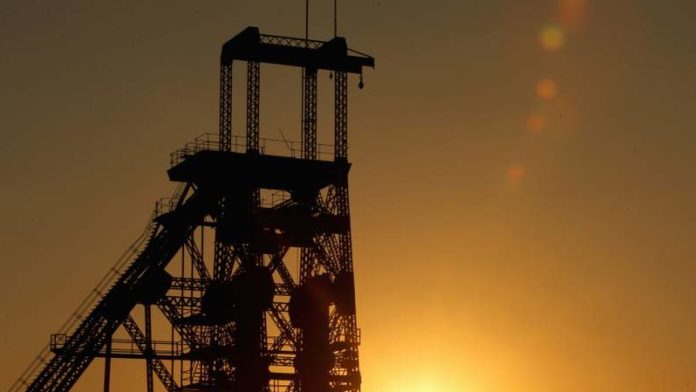
SIBANYE-Stillwater was reticent to provide gold production forecasts whilst still in the fourth quarter of its financial year, but the number for 2019 would be lower than in previous years, according to CEO Neal Froneman, who added that he’d dwelled on whether to continue owning the mines at all.
As a general guide, investors ought to work on similar gold production numbers to this year for 2019, said Froneman. In its third quarter production update published today, Sibanye-Stillwater said 2018 output would be between 1.13 and 1.16 million ounces, lower than the 1.17 to 1.21 million oz in previous guidance.
The company also extended its hedging programme on gold. Charl Keyter, Sibanye-Stillwater CFO, confirmed that about 5,700kg of gold (182,400 ounces) had been hedged at an average floor and cap of about R584,000/kg and R617,000/kg respectively. This takes total hedged gold for the year to 11,742kg (375,744 oz) – about 32% of production – at an average floor and cap of R560,000/kg and R590,000/kg respectively.
“It is hard to find a reliable estimate for the gold division, but the same sort of numbers that we achieved this year is probably what we would look forward to next year, especially as the first quarter will require getting back on track,” said Froneman.
“We’ve been critical of our own planning. Whatever the ounce plan we come up, we will make sure we come up with a cost structure that is profitable. We are not going to run a business that is inefficient or ineffective,” he said.
Asked by a North American if the gold division in South Africa was worth holding at all, Froneman replied: “We are not asset huggers. We have given serious consideration to our under-performing gold business which has been primarily due to safety issues.
“We’ve had a long, hard look to see whether they are solvable. We believe they are and we believe there is real value in the gold business. It is not apparent in these results. If our gold business continues to under-perform there’s no reason why we should be in it. But we have got real value and it will become apparent,” he said.
Sibanye-Stillwater’s gold division is still recovering from a series of incidents earlier this year which claimed the lives of 21 miners as of July. One event was an earth tremor that knocked out a large section of the Masakhane shaft at Driefontein mine. The cost of rehabilitating the shaft would be R500m “in round numbers”, said Robert van Niekerk, vice-president of Sibanye-Stillwater’s gold division.
The stress under which the gold division was labouring is also apparent in Sibanye-Stillwater’s reticence to sign an above inflation wage agreement with unions as its peer group has already done this year. Froneman was critical of those wage deals.
“We won’t be bullied by labour unions into unsustainable wage agreements. Settlements need to reflect the inflationary environment that we are in. The reason we have gone into blow out cost structures in the past is that we are bullied into above inflation wages.
“We think we have made good advances [with unions]. But we are in no rush to settle unless it is fair to employees and shareholders. We believe we will end up with a wage structure that is more appropriate than some of the others that have been settled.”
IMPALA PLATINUM
Sibanye-Stillwater said it was unlikely to enter into additional merger and acquisition activity as it focused on reducing net debt to a long-term target of 1x net debt to EBITDA (1.5x currently), and bedding in the acquisition of Lonmin – the completion of which was only likely in the early part of the first quarter of 2019 owing to “a small delay”.
And it was owing to discussions with the Competition Tribunal regarding the merger with Lonmin that prohibited Sibanye-Stillwater from a potential deal with Impala Platinum (Implats) on certain shafts it was closing in Rustenburg.
“While we are in the Competition Commission process, we have avoided applying our minds to look at anything specific [regarding Implats] because we don’t want to create further anti-trust issues while this [Lonmin] is taking place,” he said. “But there are some logical combinations. Maybe we will wait until Lonmin closes and then we can have a more detailed discussion,” he said.
Implats said on October 31 in its first quarter production update that it had “… engaged with parties” interested in buying 1 Shaft operation which is scheduled to be put on care and maintenance in April 2019 as per the company’s restructuring plan.










